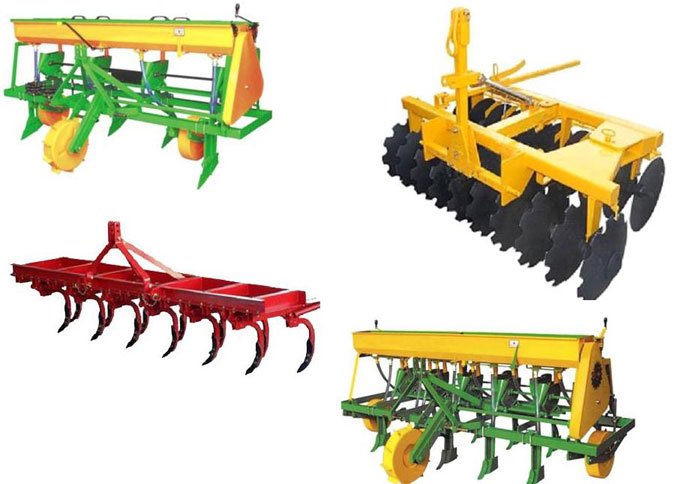
Agriculture, one of the oldest and most vital industries in the world, has undergone a significant transformation due to technological advancement and mechanization. Amid the buzz around tractors, harvesters, and automated irrigation systems, one key component often escapes the spotlight—agriculture equipment fasteners. These seemingly small components play a critical role in the strength, durability, and efficiency of agricultural machinery. As demand for more advanced farming tools rises globally, so does the need for high-performance fasteners, making this a market segment ripe for attention and investment.
Understanding Agriculture Equipment Fasteners
According to a Agriculture Equipment Fasteners Market report, the industry is expected to grow significantly in the coming years.
Agriculture equipment fasteners refer to a wide variety of mechanical devices—such as bolts, nuts, washers, screws, rivets, and pins—used to hold different parts of farming equipment together. From heavy-duty tractors to combine harvesters and tillage machines, fasteners are fundamental in assembling and maintaining the machinery that drives modern agriculture. These components must withstand extreme mechanical stress, fluctuating environmental conditions, vibration, and corrosion. As a result, manufacturers often use high-grade materials such as stainless steel, carbon steel, and specialized coatings to ensure performance and longevity.
Why Are Fasteners So Crucial in Agricultural Equipment?
The significance of fasteners lies in their ability to ensure the structural integrity and operational efficiency of agricultural machinery. Faulty or substandard fasteners can lead to equipment breakdowns, delays in farming operations, increased maintenance costs, and even safety hazards. For instance, a loose bolt in a tractor’s hydraulic system could result in complete system failure during peak farming season. Therefore, the selection, design, and quality control of fasteners are crucial considerations for equipment manufacturers.
Moreover, fasteners are not one-size-fits-all components. Each machine and application may require custom fastener solutions, especially as the machinery evolves to include automation, GPS tracking, and precision farming technologies. The increasing complexity of equipment also demands that fasteners provide a higher degree of reliability and resistance to operational stressors.
Market Dynamics and Key Drivers
The agriculture equipment fastener market is growing steadily and is being driven by several major trends. Firstly, the global population continues to rise, leading to increased demand for food and agricultural output. This, in turn, is propelling the demand for efficient and durable agricultural machinery, and by extension, high-quality fasteners.
Secondly, governments worldwide are offering subsidies and incentives to modernize the agricultural sector. These initiatives often encourage the use of technologically advanced machinery, creating new opportunities for fastener manufacturers to develop innovative, high-performance solutions.
Thirdly, the rise of precision agriculture and smart farming practices is reshaping the design of farming equipment. As machines integrate more electronic components and sensors, the need for miniaturized, corrosion-resistant, and multi-functional fasteners becomes critical.
Additionally, the growth of aftermarket services and maintenance in agricultural machinery also fuels demand for replacement fasteners. Equipment used in rugged terrains or under extreme weather conditions often requires periodic servicing, reinforcing the need for accessible, high-quality fastening solutions.
Technological Advancements and Innovation
Fastener manufacturers are innovating rapidly to meet the evolving demands of the agriculture sector. Some of the latest developments include:
-
Self-locking fasteners: Designed to resist vibration and prevent loosening, these are essential in high-vibration machinery like combines and balers.
-
Corrosion-resistant coatings: Given that much agricultural work takes place outdoors in varying climatic conditions, manufacturers are increasingly using coatings like zinc-nickel or hot-dip galvanization to enhance longevity.
-
Custom-designed solutions: OEMs (Original Equipment Manufacturers) are collaborating with fastener producers to develop machine-specific components that improve efficiency and reduce installation time.
-
Smart fasteners: Though still in early stages, sensor-integrated fasteners can monitor torque, tension, or environmental exposure, offering predictive maintenance capabilities.
Challenges in the Agriculture Equipment Fastener Market
Despite its potential, the market faces several challenges. One of the most pressing issues is counterfeit products. Low-quality fasteners often flood local markets, especially in developing countries, causing equipment failures and damaging manufacturer reputations. There is also a general lack of standardization, particularly in emerging markets, which makes quality control and interoperability difficult.
Raw material price volatility is another constraint, affecting production costs and pricing strategies for fastener manufacturers. The reliance on specific grades of steel and alloy means that even slight fluctuations in metal prices can impact the bottom line.
Additionally, supply chain disruptions, such as those experienced during the COVID-19 pandemic or due to geopolitical conflicts, have highlighted the vulnerability of global sourcing models. Manufacturers are now focusing on regional production hubs and inventory optimization to mitigate such risks.
Regional Insights and Competitive Landscape
The agriculture equipment fastener market exhibits varied growth across different regions. North America and Europe, with their high adoption of precision farming, present significant demand for advanced fastening solutions. Meanwhile, the Asia-Pacific region, led by countries like India and China, is emerging as a high-growth market due to expanding agricultural activities, rising mechanization, and government support.
Several key players dominate the market, including Würth Group, Stanley Black & Decker, LISI Group, PennEngineering, and Bossard Group. These companies are investing heavily in R&D and strategic partnerships to enhance their product offerings and global reach.
Future Outlook: Is This a Hidden Growth Engine?
Looking ahead, the agriculture equipment fastener market is expected to experience sustained growth. As farming practices continue to modernize and mechanization becomes more widespread, the demand for durable and reliable fastening solutions will rise. Moreover, environmental considerations are likely to influence fastener design and materials, pushing the industry toward more sustainable practices.
Emerging trends such as modular machinery, automation, and the use of AI and IoT in agriculture will further increase the complexity—and importance—of fasteners. Companies that invest in innovation, quality assurance, and customer education will be best positioned to capitalize on these shifts.
Conclusion
While they may not steal headlines, agriculture equipment fasteners are indispensable components in modern farming machinery. They serve as the foundation of mechanical integrity, safety, and performance. As the agricultural sector continues to evolve in response to global demands, climate change, and technological advancement, the fastener industry must also step up to meet these challenges. In doing so, it has the potential to transform from a background player into a key enabler of the next generation of smart agriculture.


